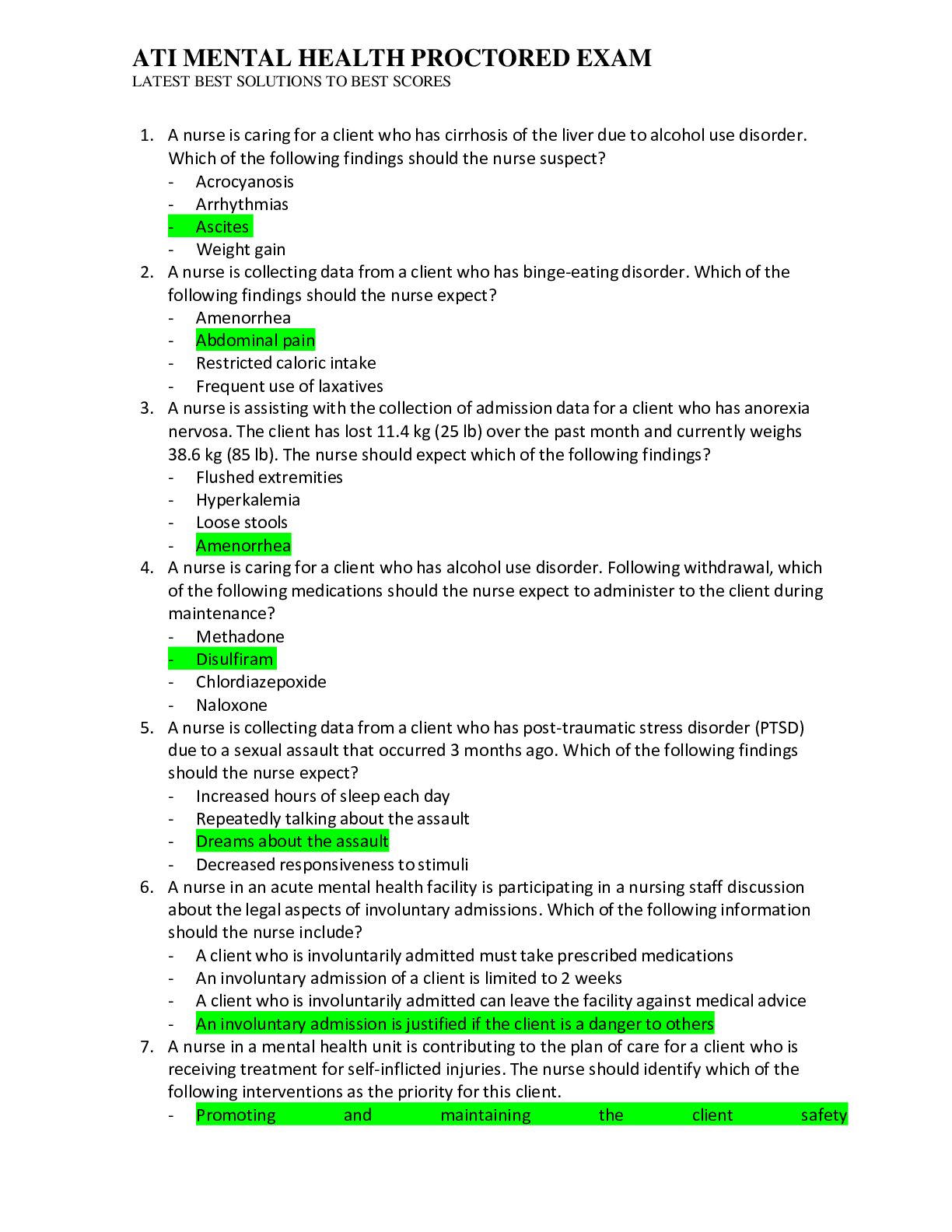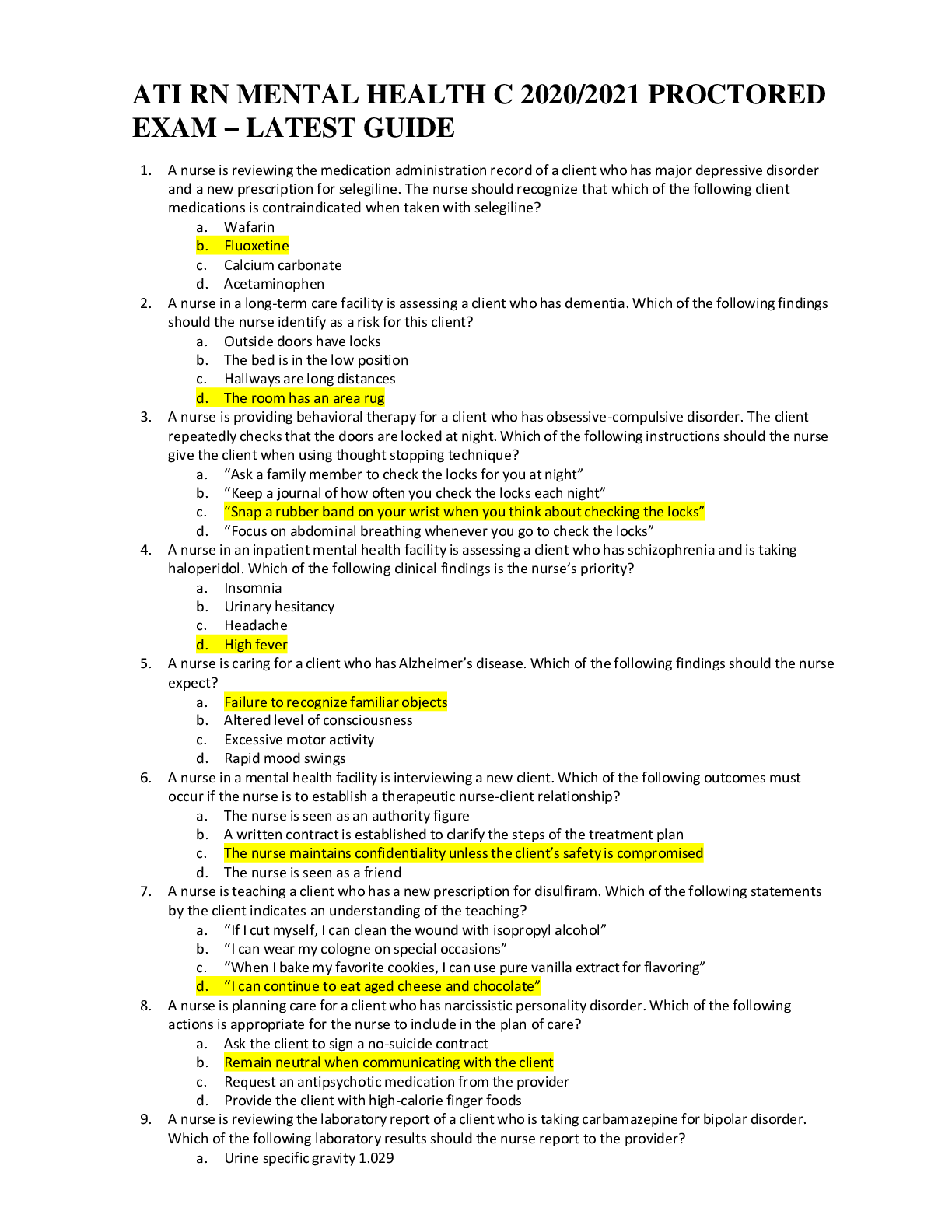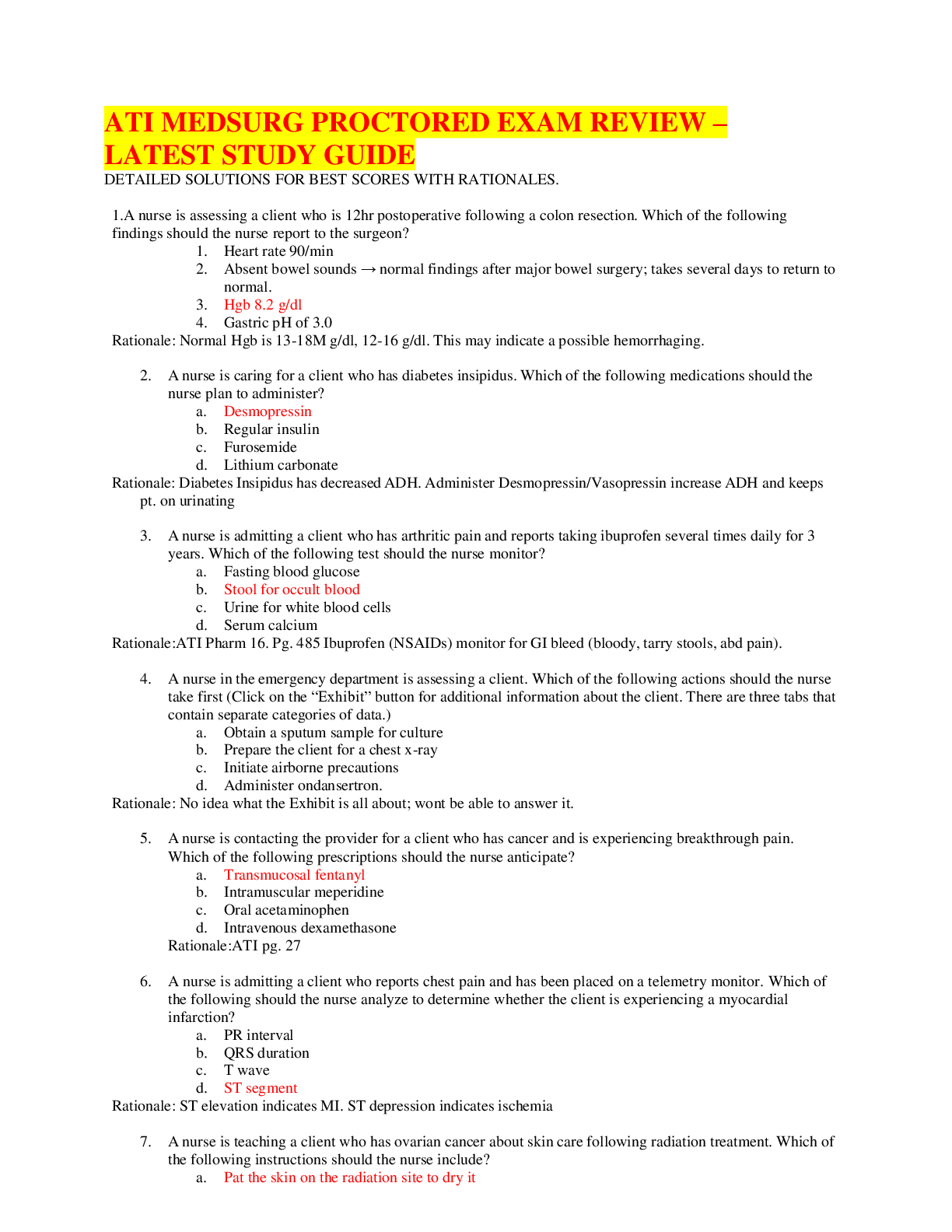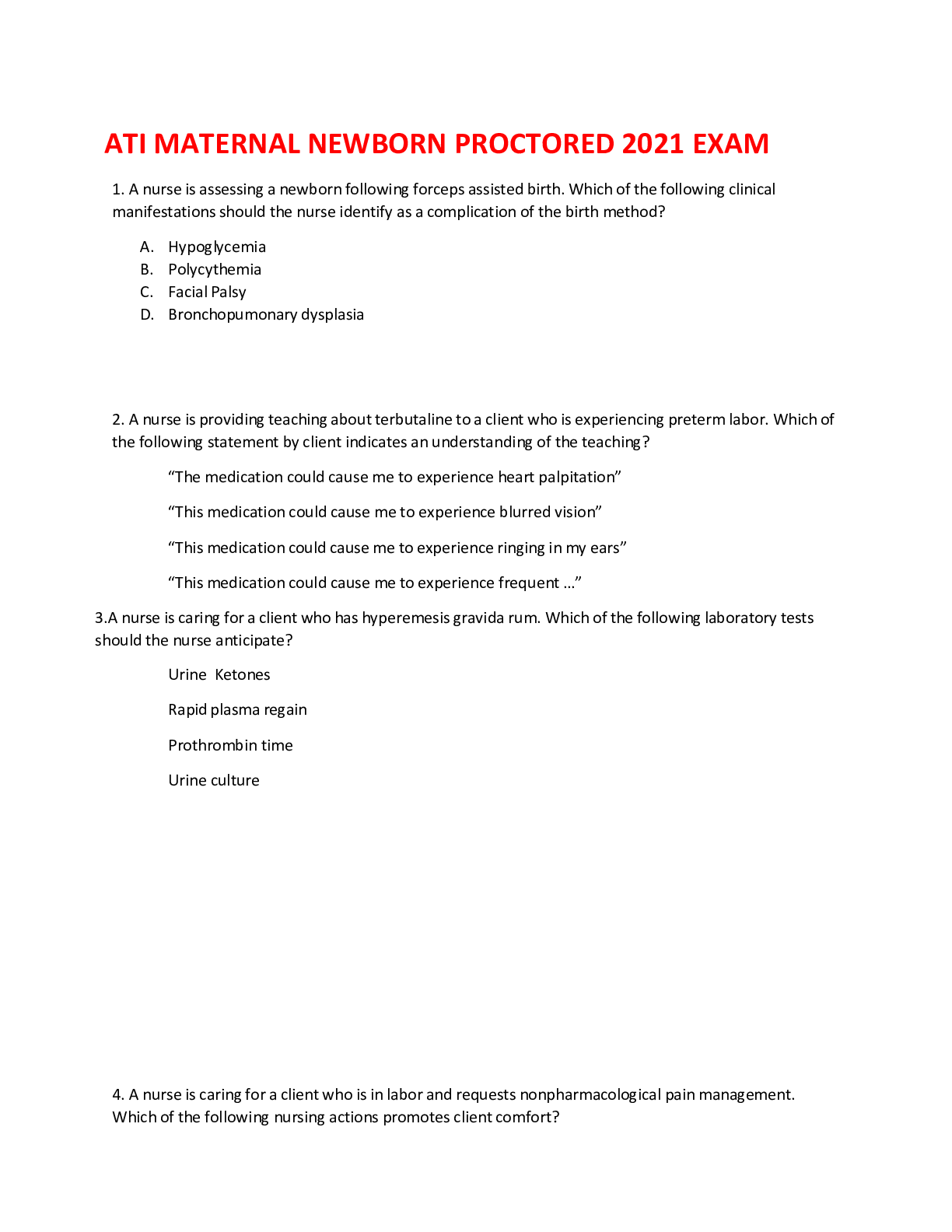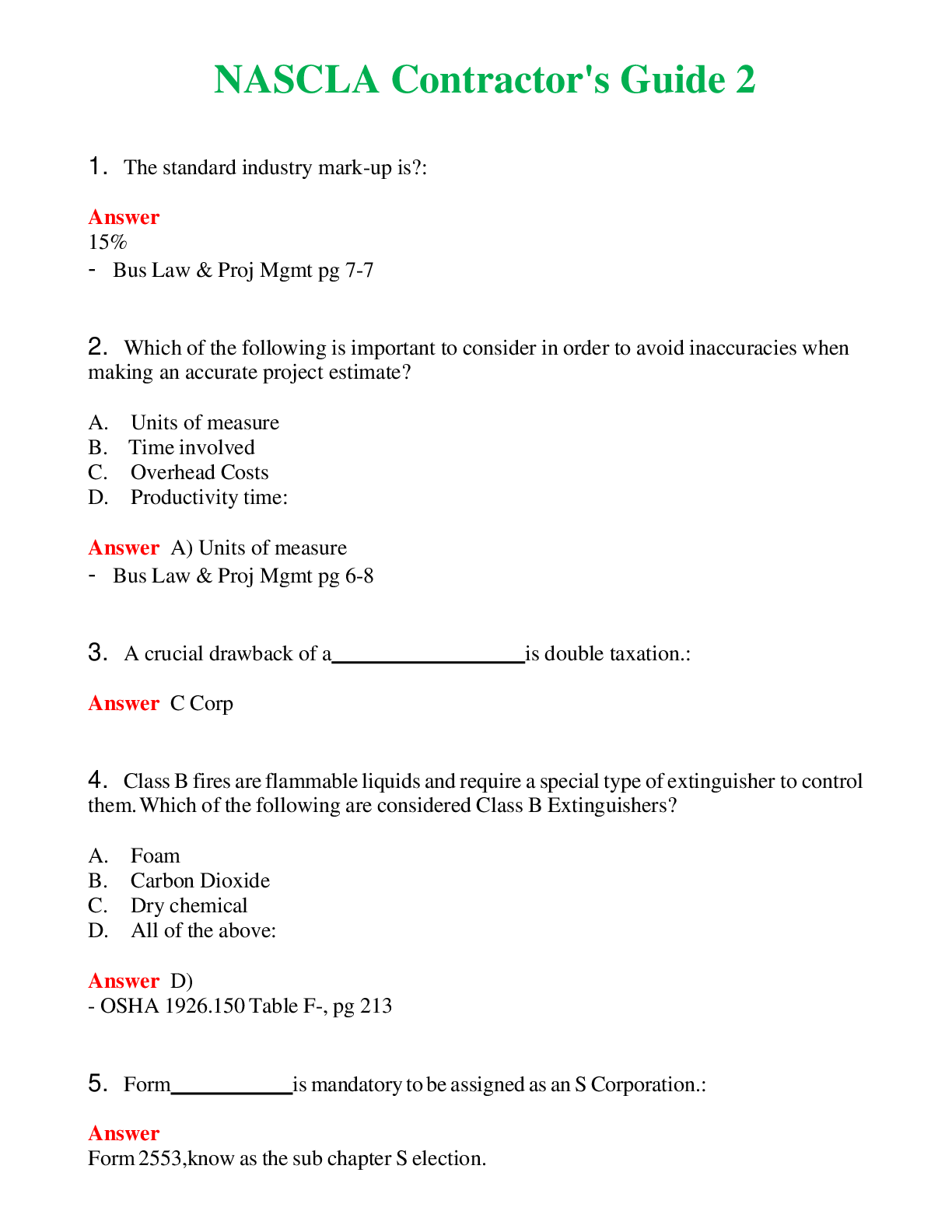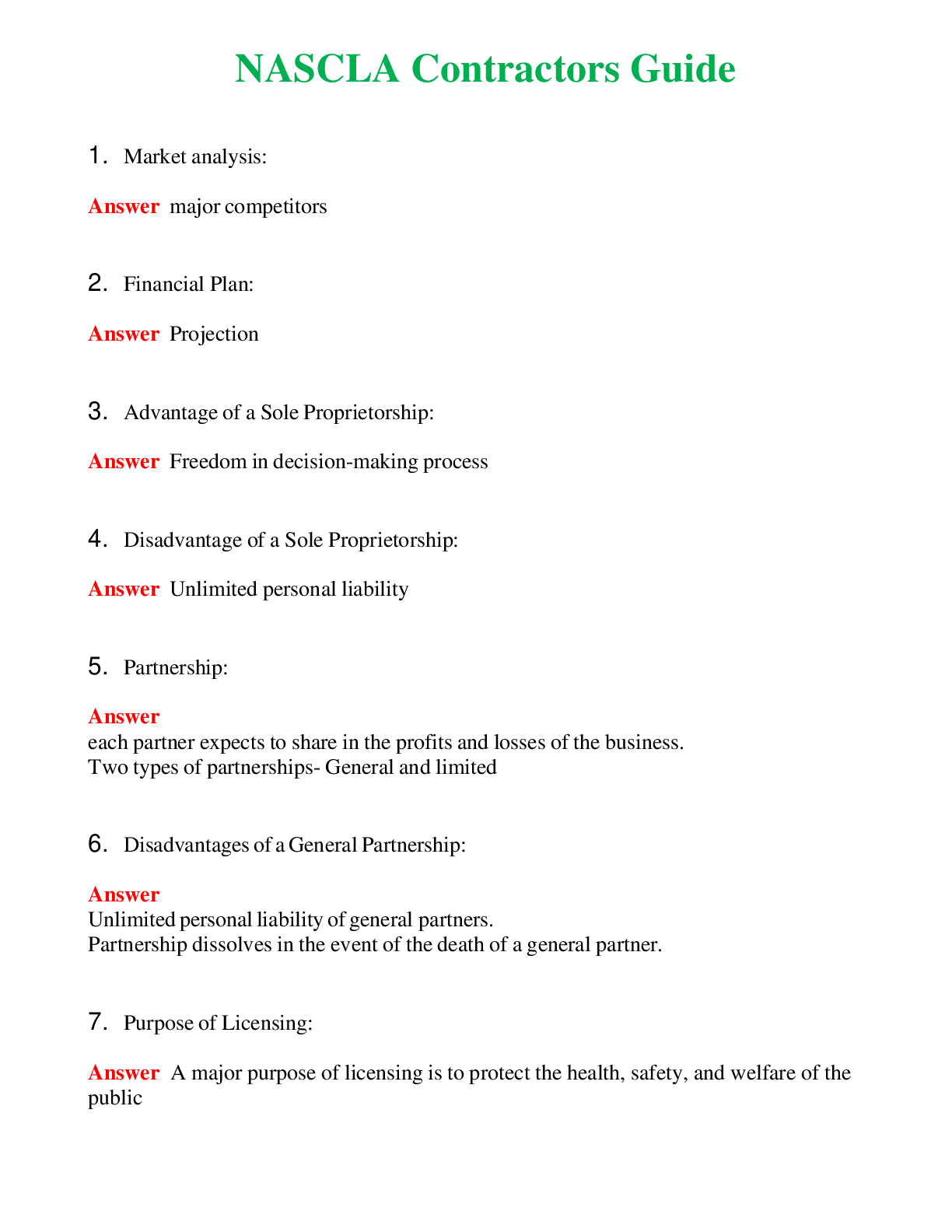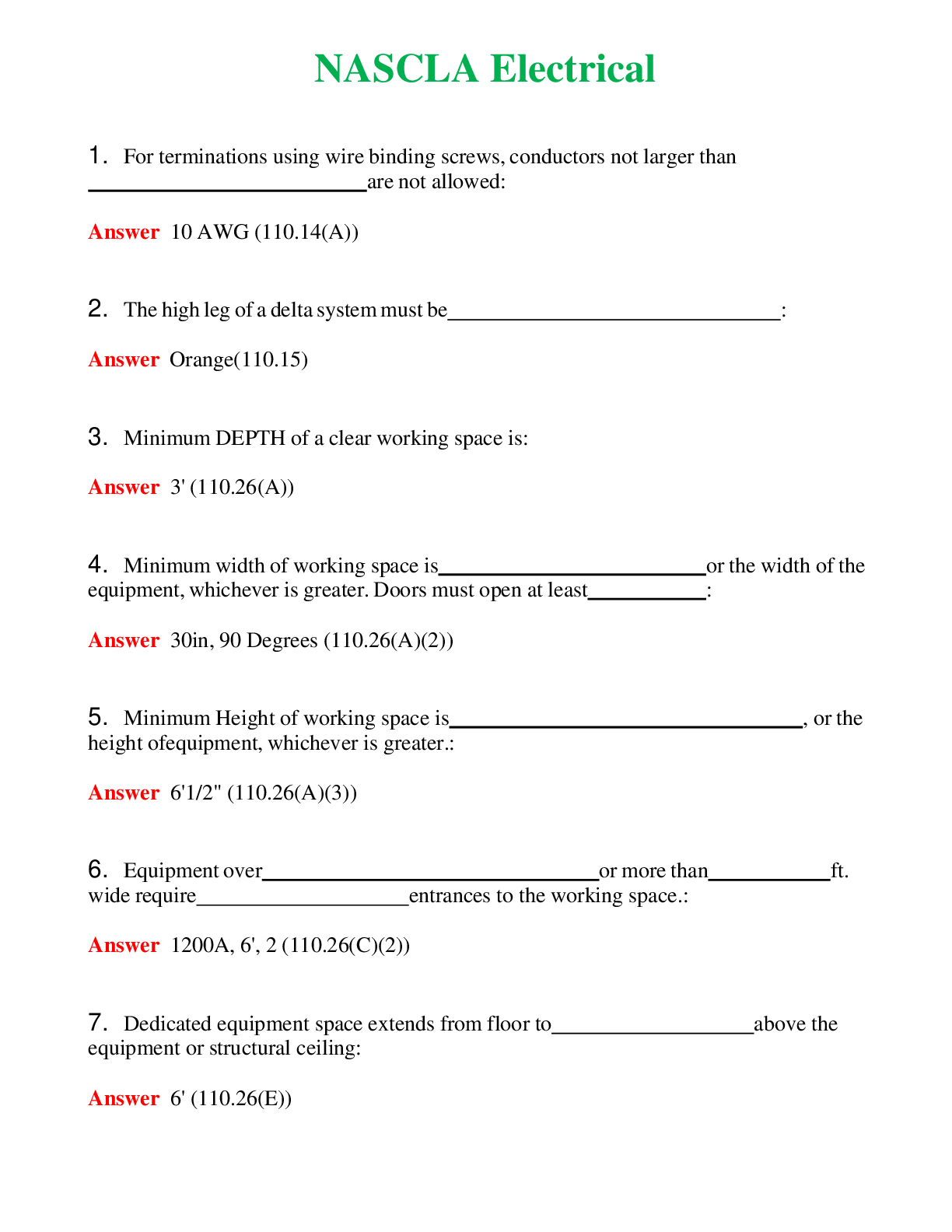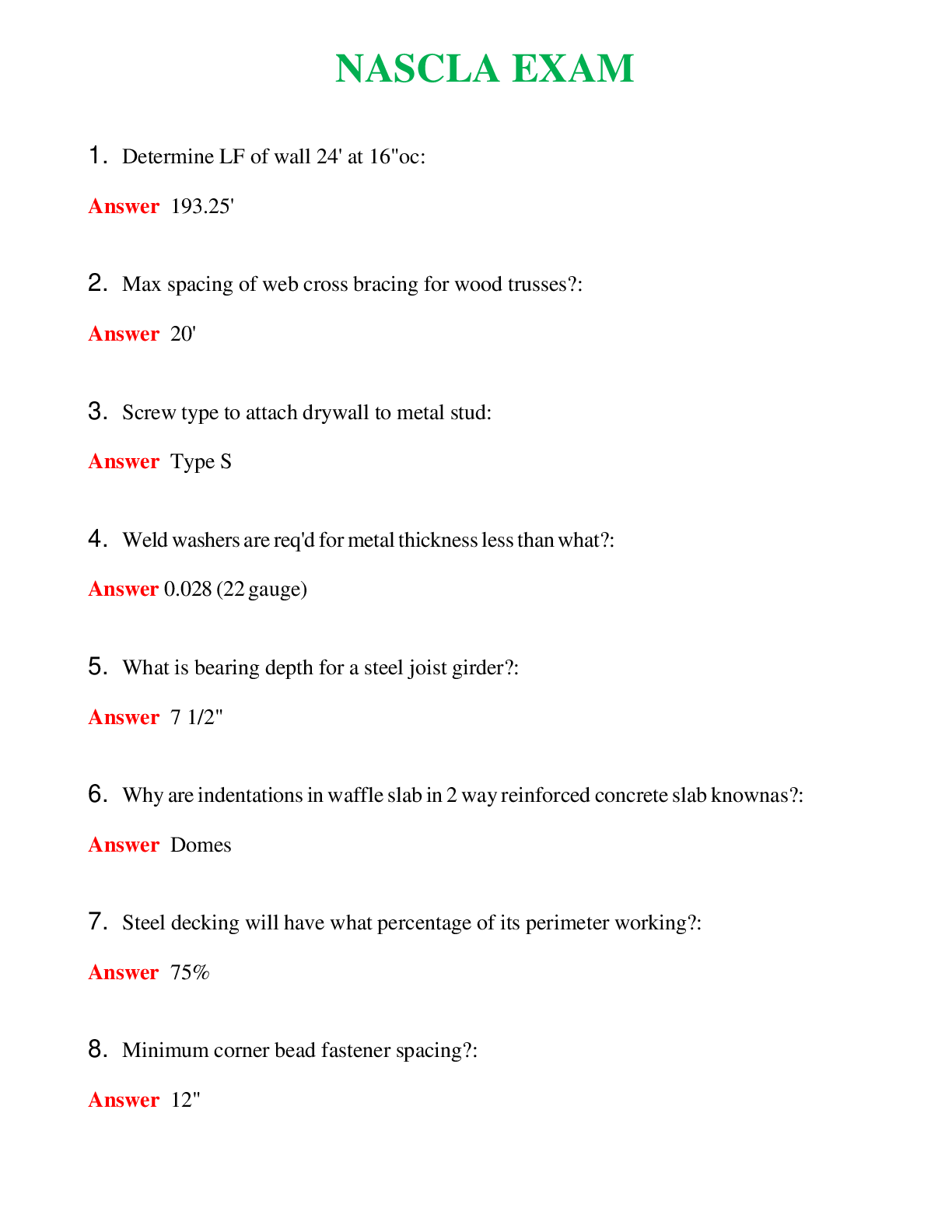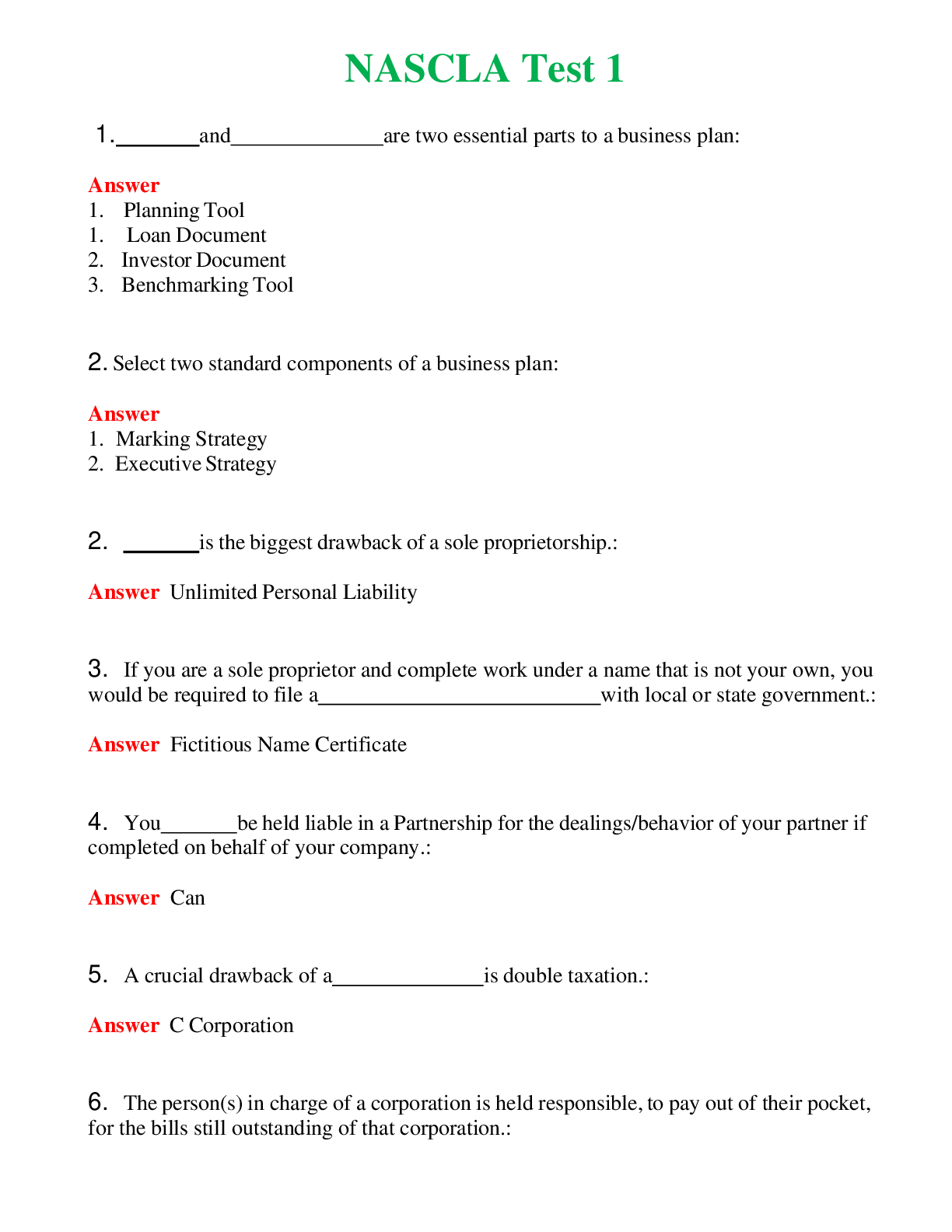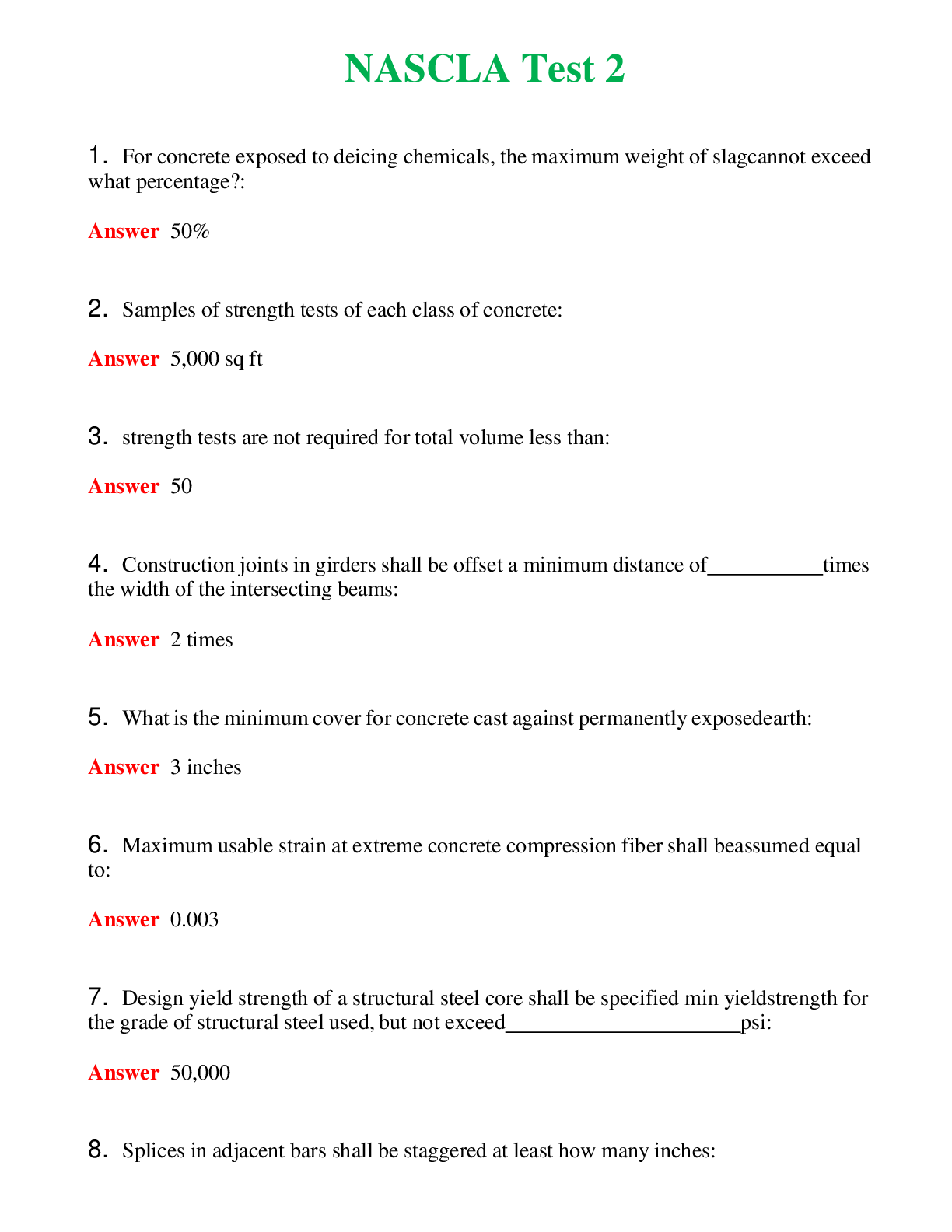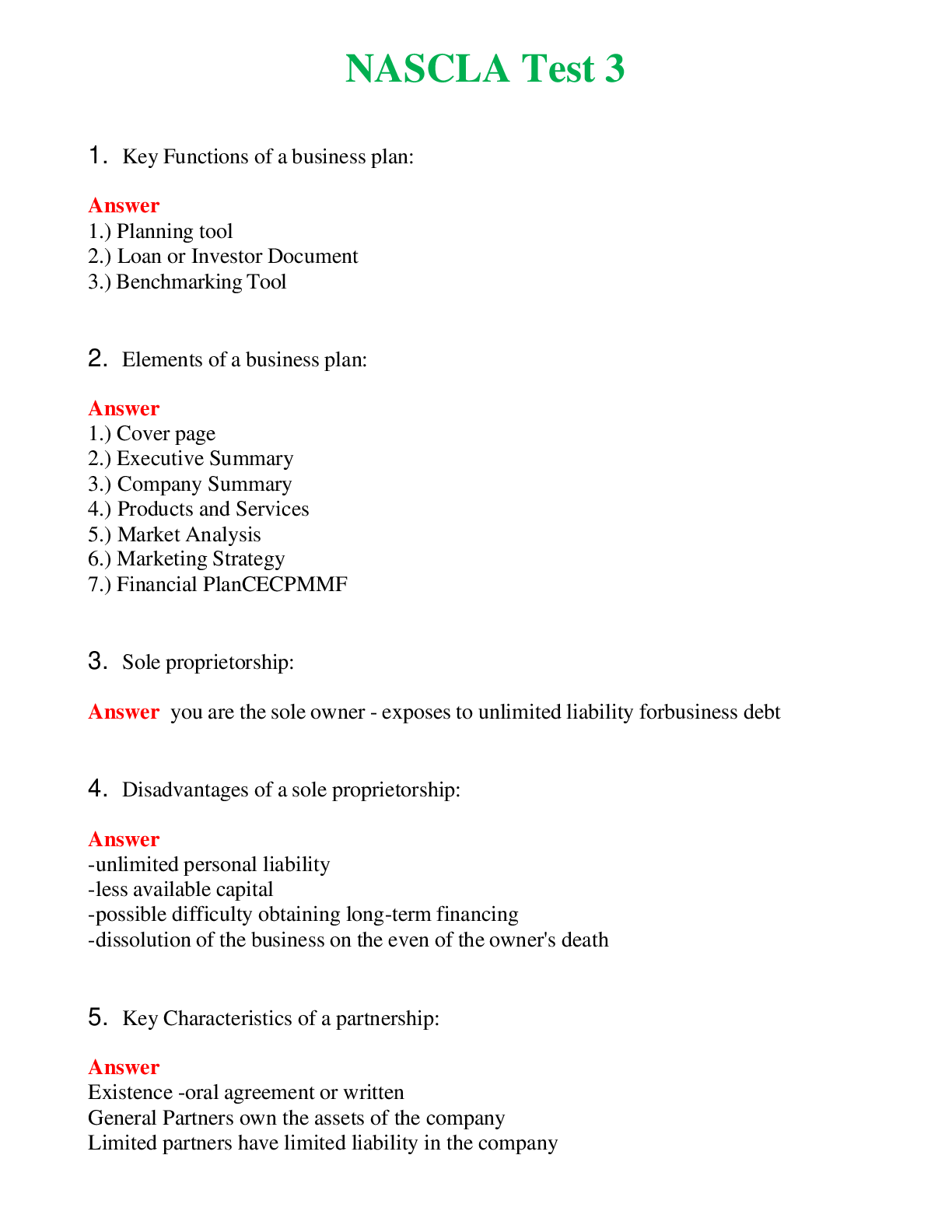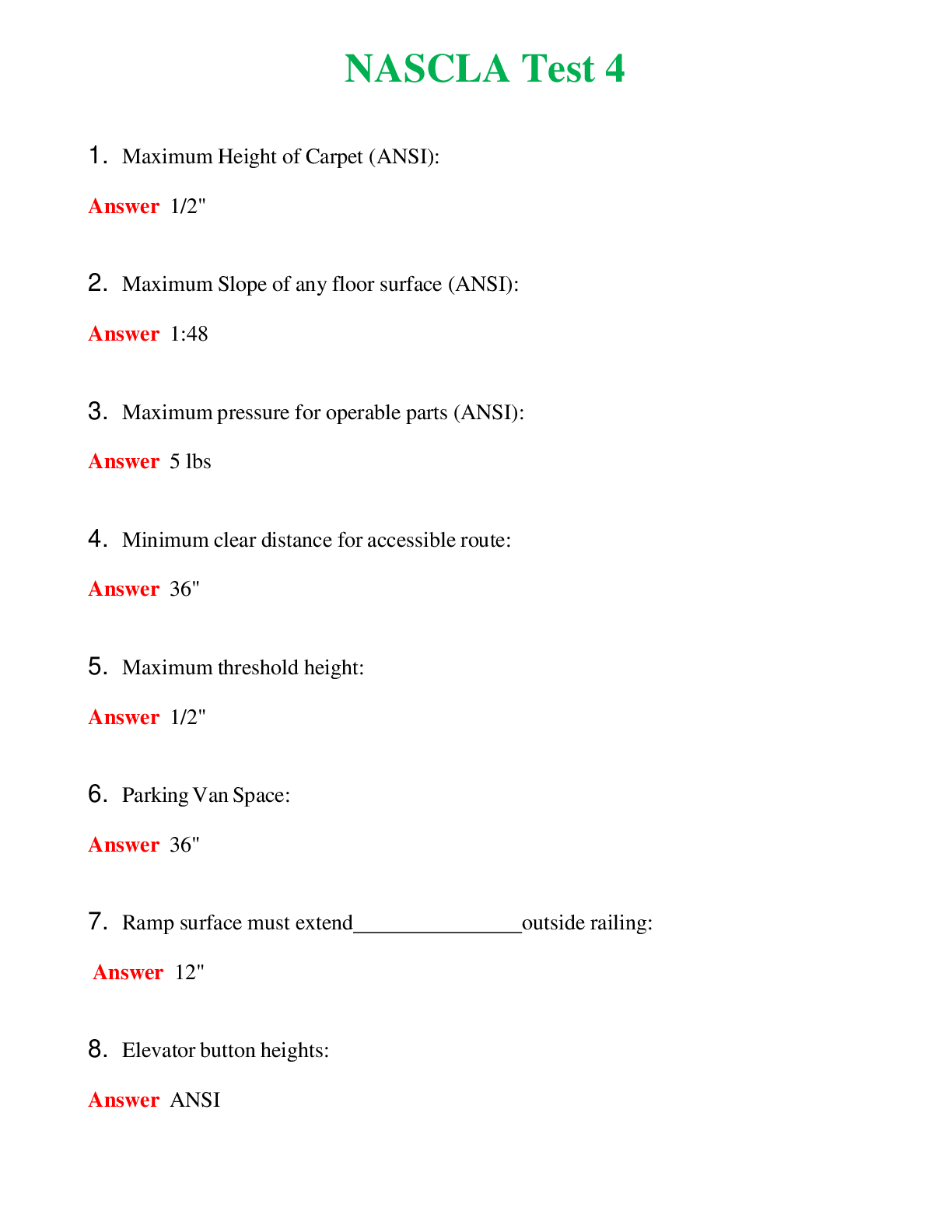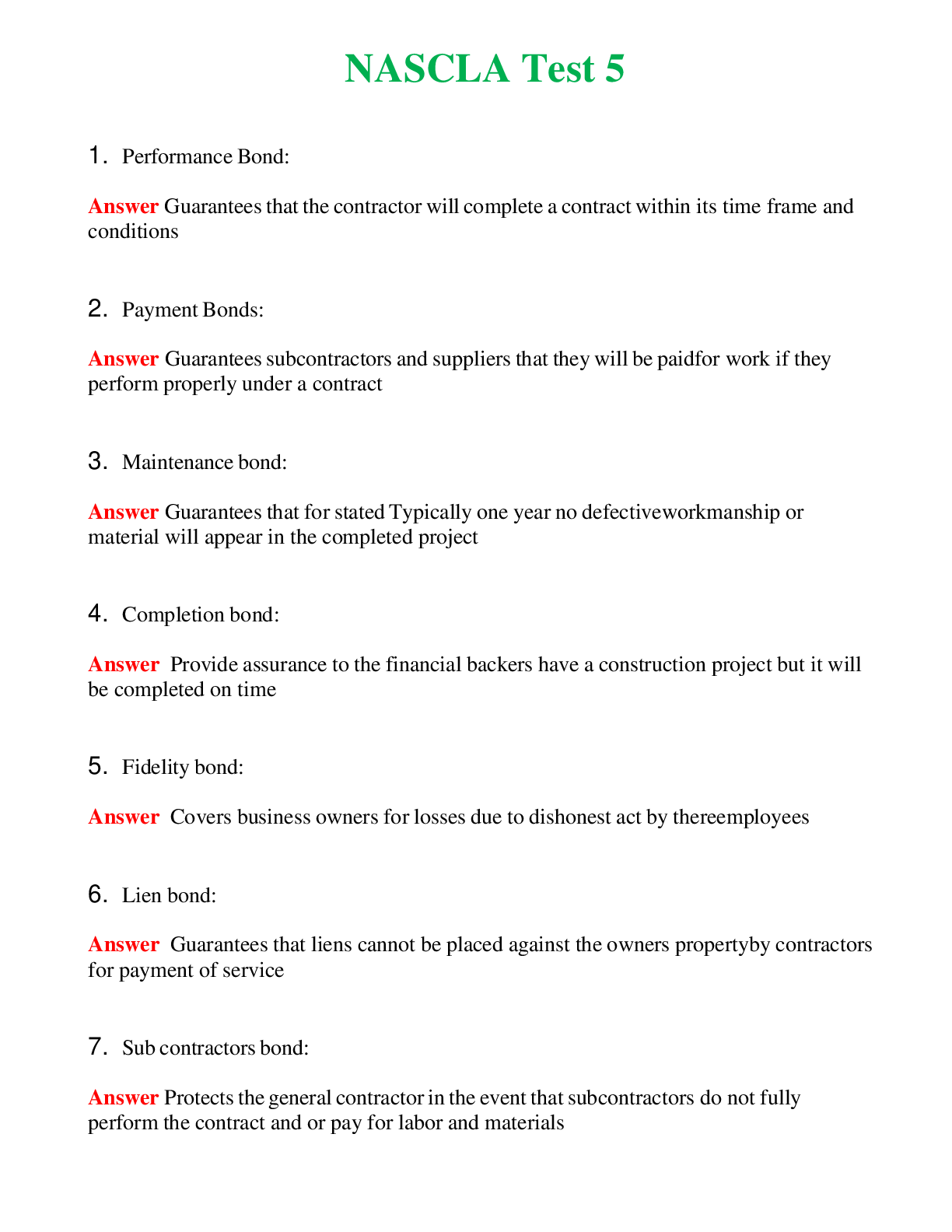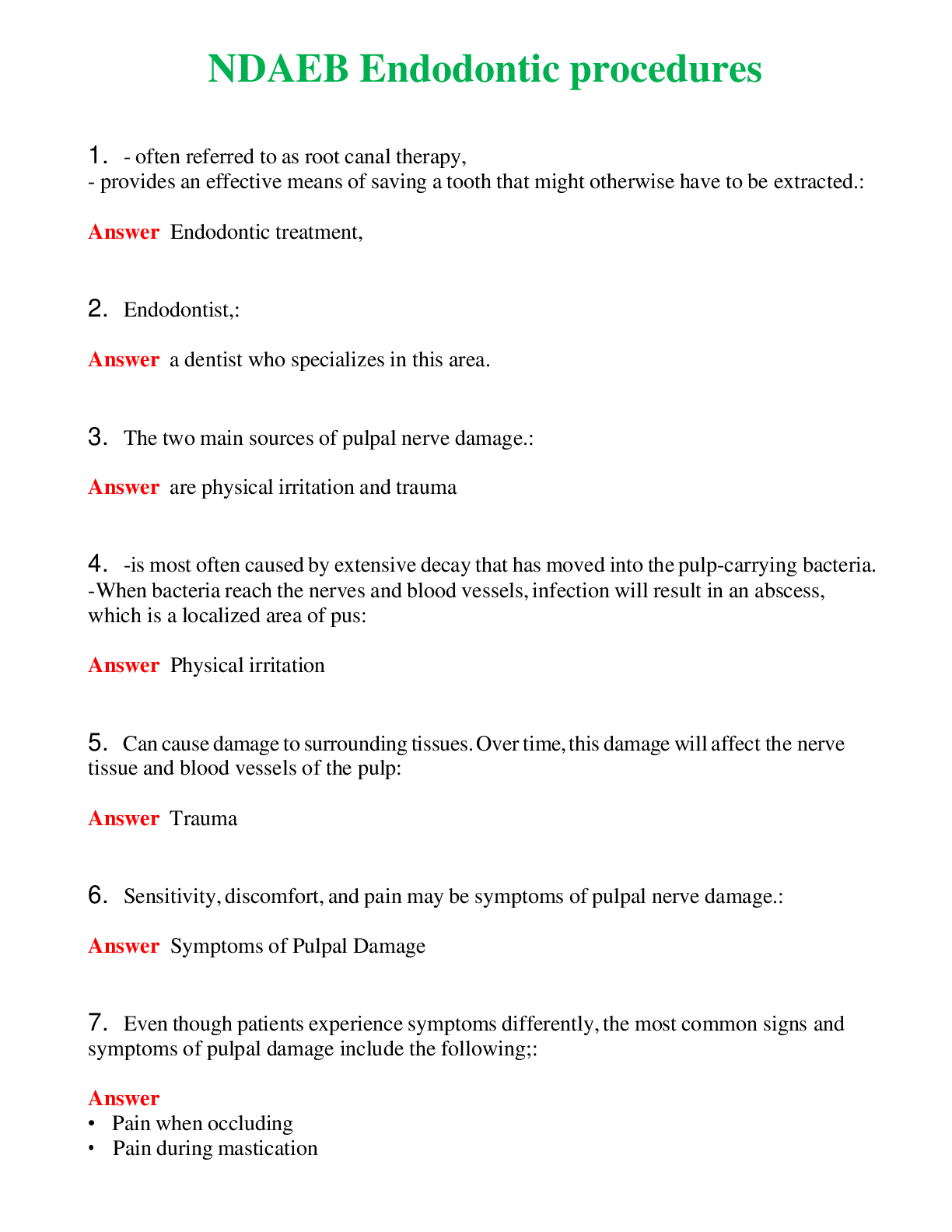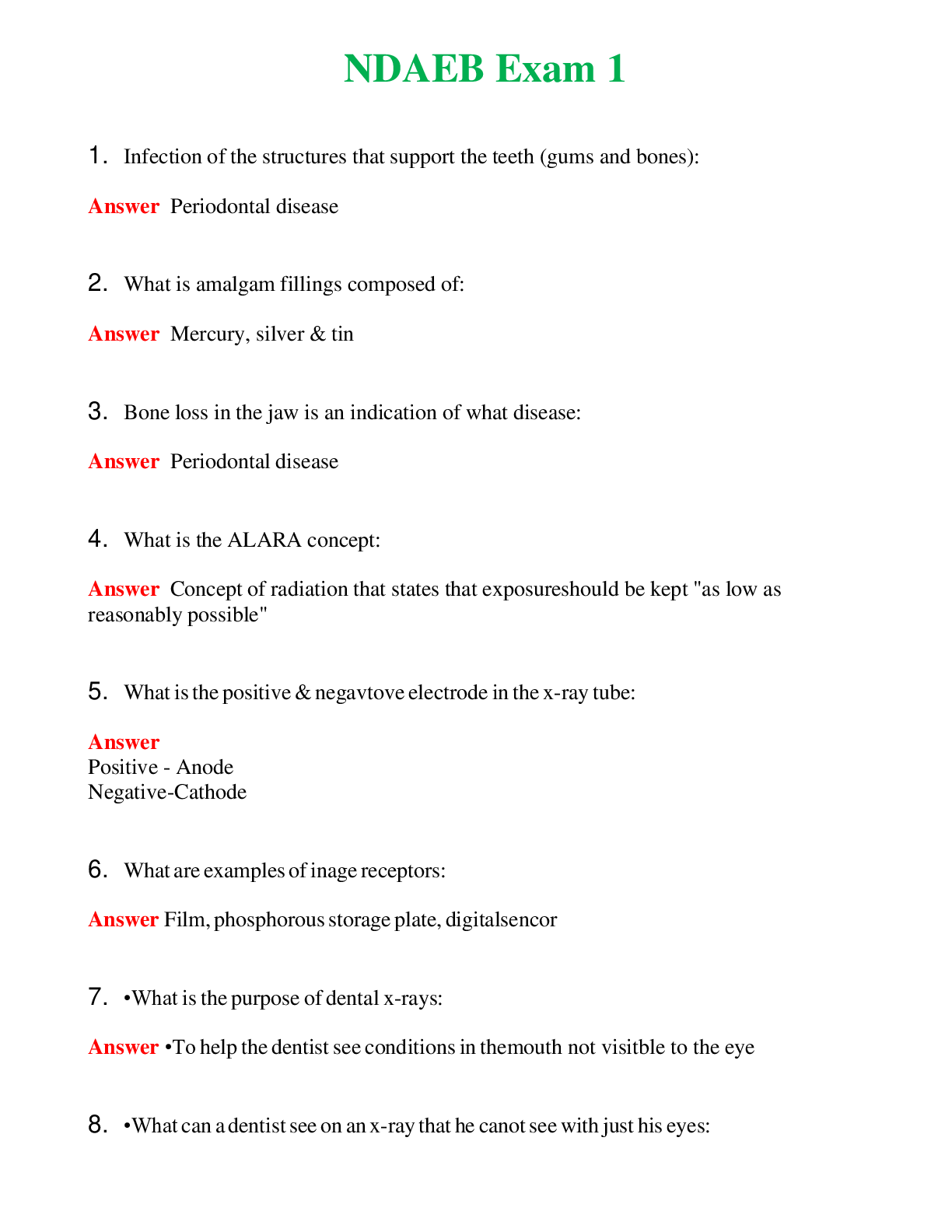ATI MENTAL HEALTH ASSESSMENT RETAKE GUIDE-RELIABLE CORRECT STUDY GUIDE
Document Content and Description Below
Mental Status • Mental status is a person’s emotional and cognitive functioning o Optimal functioning aims toward simultaneous life satisfaction in work, caring relationships, and within the sel ... f o Usually, mental status strikes a balance between good and bad days, allowing person to function socially and occupationally Question The nurse understands that all of the following are components of the mental status assessment except? 1. Known illness or health problem 2. Current medications known to affect mood or cognition 3. Cultural background 4. Personal history; current stress, social habits, sleep habits, and drug and alcohol use Mental Status Structure and Function • Mental disorder o Significant behavioral or psychological pattern associated with the following: ▪ Distress, a painful symptom ▪ Disability, impaired functioning ▪ Significant risk of pain, disability, or death, or a loss of freedom Mental Status Structure and Function (Cont.) • Organic disorders o Due to brain disease of known specific organic cause (e.g., delirium, dementia, alcohol and drug intoxication and withdrawal) • Psychiatric mental illnesses o Organic etiology has not yet been established (e.g., anxiety disorder or schizophrenia) o Mental status assessment documents a dysfunction and determines how that dysfunction affects self-care in everyday life Defining Mental Status • Mental status cannot be scrutinized directly like the characteristics of skin or heart sounds • Its functioning is inferred through assessment of an individual’s behaviors: o Consciousness ▪ Being aware of one's own existence, feelings, and thoughts and of the environment. This is the most elementary of mental status functions. o Language ▪ Using the voice to communicate one's thoughts and feelings. This is a basic tool of humans, and its loss has a heavy social impact on the individual. o Mood and affect ▪ Both of these elements deal with the prevailing feelings. Affect is a temporary expression of feelings or state of mind, and mood is more durable, a prolonged display of feelings that color the whole emotional life. Question o Orientation ▪ The awareness of the objective world in relation to the self. Able to name own person, place, and time. o Attention ▪ The power of concentration, the ability to focus on one specific thing without being distracted by many environmental stimuli. o Memory ▪ The ability to lay down and store experiences and perceptions for later recall. Recent memory evokes day-to-day events; remote memory brings up years' worth of experiences. o Abstract reasoning ▪ Pondering a deeper meaning beyond the concrete and literal. o Thought process ▪ The way a person thinks; the logical train of thought. o Thought content ▪ What the person thinks—specific ideas, beliefs, the use of words. o Perceptions ▪ An awareness of objects through the five senses. Which of the following basic functions should the nurse test first in an assessment of mental status? 1. Behavior 2. Consciousness (is the patient breathing? ABCs) 3. Judgment 4. Language Developmental Competence • Infants and children o Difficult to separate and trace development of just one aspect of mental status in children, because all aspects are interdependent • Aging adults o Older adulthood contains more potential for losses o Grief and despair surrounding these losses can affect mental status and can result in disability, disorientation, or depression o Chronic diseases such as heart failure, cancer, diabetes, and osteoporosis include fear of loss of life Components of the Mental Status Examination • Full mental status examination is a systematic check of emotional and cognitive functioning • Usually, mental status can be assessed in the context of the health history interview • Keep in mind the four main headings of mental status assessment: A-B-C-T o Appearance o Behavior o Cognition o Thought processes Mental Status Examination • Integrating mental status examination into the health history interview is sufficient for most people • You will collect ample data to be able to assess mental health strengths and coping skills and to screen for any dysfunction • It is necessary to perform a full mental status examination when any abnormality in affect or behavior is discovered and in certain situations When a Full Mental Status Examination Is Necessary • Patients whose initial screening suggests an anxiety disorder or depression • Behavioral changes, such as memory loss, inappropriate social interaction • Brain lesions: trauma, tumor, cerebrovascular accident or stroke • Aphasia: impairment of language ability secondary to brain damage • Symptoms of psychiatric mental illness, especially with acute onset Contributions from Health History o Known illnesses or health problems, such as alcoholism or chronic renal disease o Medications with side effects of confusion or depression o Educational and behavioral level: note that factor as normal baseline, and do not expect performance on mental status exam to exceed it o Responses indicating stress in social interactions, sleep habits, drug and alcohol use Objective Data • Main components of a mental status examination o Sequence of steps forms a hierarchy in which the most basic functions are assessed first o First steps must be accurately assessed to ensure validity of steps that follow ▪ Appearance ▪ Behavior ▪ Cognition ▪ Thought processes Objective Data: Appearance • Posture o Erect and position relaxed • Body movements o Body movements voluntary, deliberate, coordinated, and smooth and even • Dress o Appropriate for setting, season, age, gender, and social group • Grooming and hygiene o Person is clean and well groomed; hair is neat and clean o Use care in interpreting clothing that is disheveled, bizarre, or in poor repair, as well as piercings and tattoos, because these may reflect person’s economic status or deliberate fashion trend, especially among adolescents o Disheveled appearance in previously well-groomed person is significant .........................................................................................................................................................................................................................................CONTINUED [Show More]
Last updated: 3 years ago
Preview 1 out of 10 pages

Buy this document to get the full access instantly
Instant Download Access after purchase
Buy NowInstant download
We Accept:

Reviews( 0 )
$16.00
Can't find what you want? Try our AI powered Search
Document information
Connected school, study & course
About the document
Uploaded On
Nov 20, 2021
Number of pages
10
Written in
All
Additional information
This document has been written for:
Uploaded
Nov 20, 2021
Downloads
0
Views
133




